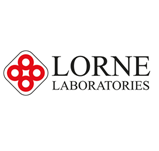Nutritional and Non-Nutritional Anemia
24 June 2015
Anemia is a common condition where there is a low count of red blood cells circulating the body. This is due to low levels of iron which causes the blood to not have enough hemoglobin.
There are various things that can cause anemia. With over 400 different types, it can be tricky to understand them all!
However we can categorise anemia causes into two groups; Nutritional and Non-Nutritional anemia.
Nutritional Anemia
Nutritional or diet-related anemia normally comes from a deficiency of one or many nutrients containing iron, vitamin B or manganese. To address nutritional anemia, iron needs to be mobilised. Ingesting foods or supplements to reverse the deficiency can do this.
Foods with a high iron count are:
· Brown rice
· Fish
· White and red meat
· Eggs
· Dried fruit
However there are foods that can make it tricky to absorb iron in your blood, leading to a more serious condition of anemia.
These are:
· Tea
· Coffee
· Food and drink high in calcium
· Wholegrain cereals
Non-Nutritional Anemia
Non-nutritional anemia can be caused by injury leading to abnormal bleeding. It can also be triggered by non-injury events such as stomach ulcers, cancers, heavy menstrual cycles and/or hemorrhoids.
Non-nutritional anemia can also be hereditary. The top hereditary diseases leading to anemia are sickle cell disease and thalassemia.
Diseases affecting the kidneys or bone marrow can also lead to anemia due to the diminishing of red blood cell production.
Cancer treatments such as chemotherapy can affect the bone marrow leading to anemia. This is called aplastic anemia, which causes not only a deficiency in red blood cells but also white blood cells and platelets.
Anemia is the most common disorder of the blood, with women being more affecting than men. Over 18% of women in the UK are suffering from it.
If not diagnosed properly, anemia not only affects the woman but her children, with severe results being children born deaf and/or stillborn.
The use of diagnostic kits to detect anemia
Various blood tests are used to find out what type of anemia you have and how serious it is. The most common test is CBC (Complete blood count), carried out using a simple blood testing kit.
CBC
This test checks the hemoglobin levels in red blood cells, if a low level it is a sure sign of anemia.
The test also checks the number of red blood cells, white blood cells, and platelets in the blood, which if results come back irregular is also an obvious sign of anemia. However it could also point to another blood disorder, infection or a more serious condition.
CBC also looks at the size of red blood cells, for in anemic patients the cells are normally significantly smaller than the standard. Mean corpuscular volume is the term given to the size measurement of red blood cells (MCV).
Hemoglobin electrophoresis
The test consists of analyzing the different hemoglobin in the blood. This test is very useful for determining the type of anemia a patient has rather than the severity.
Reticulocyte count
This test is specifically for measuring the number of young red blood cells in the blood. This shows whether the bone marrow is making red blood cells at an appropriate rate.
Serum Iron/serum ferritin tests
Serum Iron tests measures the amount of iron in the blood serum after all the clotting elements and red blood cells are removed. If abnormally high or low, is a sure sign for anemia or hemochromatosis (too much iron in the blood).
Serum Ferritin tests measures the amount of ferritin in the body. Ferritin is the major storage protein in the body. Like Serum Iron tests, a high level of ferritin indicates an iron storage disorder such as hemochromatosis, whereas a low level of ferritin means an iron deficiency disorder causing anemia.
To perform these tests, the appropriate laboratory equipment must be purchased. At Lorne Labs we have a range of blood transfusion equipment and diagnostic kits.
< Back to blog list
Share





